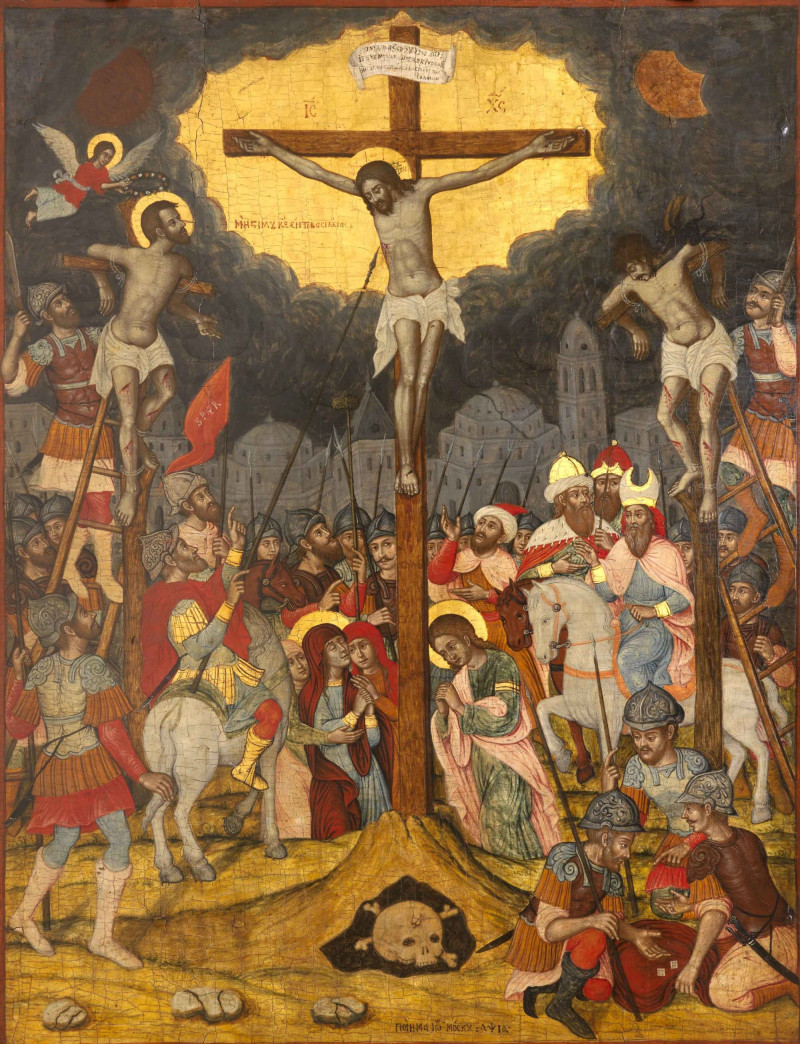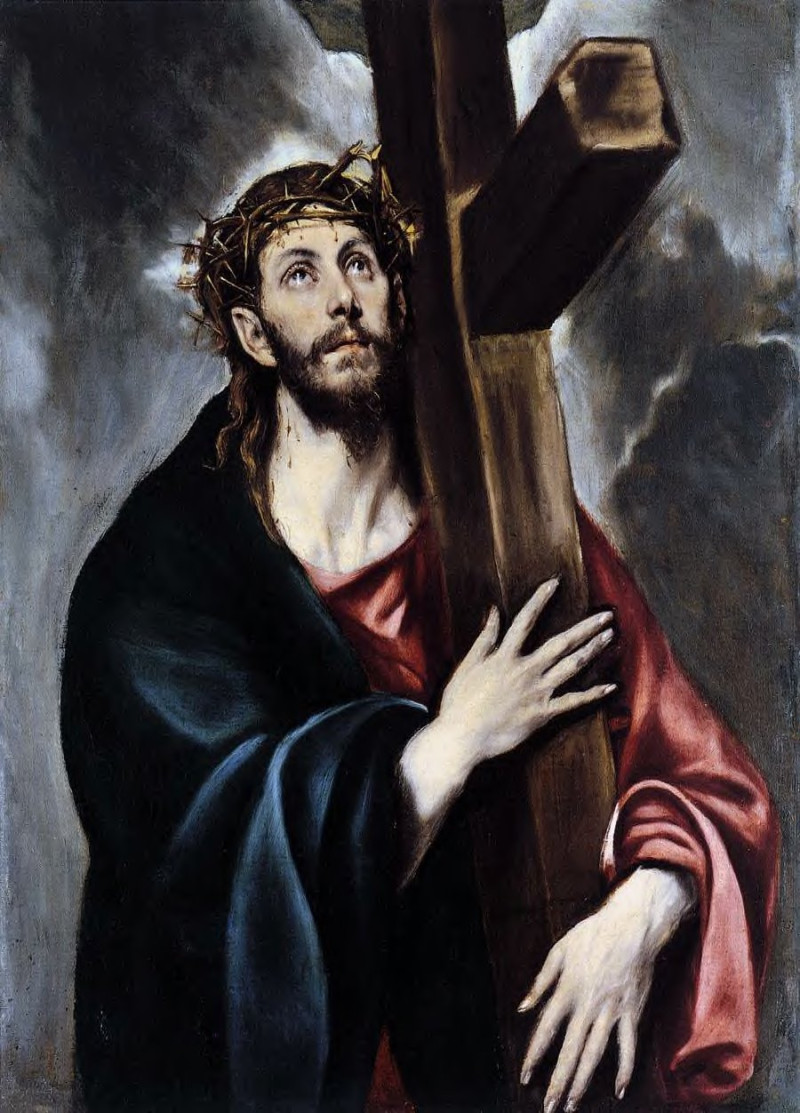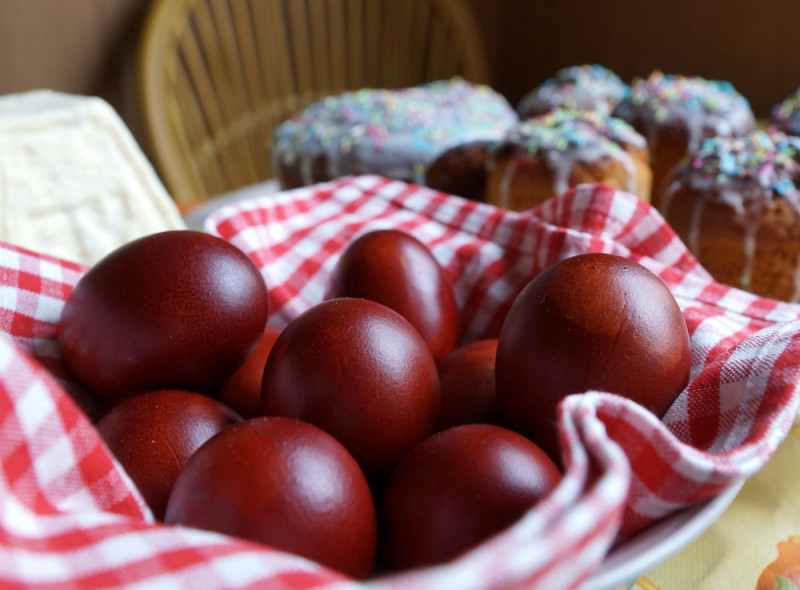In the Ecumenical Patriarchate, every ten years is “baking”, ie the Friday, of St. Myrrh, which is then sent to the local Orthodox churches.
By Marina Zoziou
On the morning of Great Thursday The Vespers ended with the Divine Liturgy attached Kingdomin which most Christians are used to associate.
With the help of Archimandrite P. Filoumenou RoubiSecretary General of the Holy Archdiocese of Athens, we will give the “stigma” of the day, while Mrs. Eullena KardamilaPhD candidate will “travel” us to customs and traditions in every corner of Greece, which are deeply rooted over time.
In the Ecumenical Patriarchate, every ten years are “baking”, ie Friday, of St. Myrrh, which is then sent to the local Orthodox churches. Saint Myrrh is the result of the mixing of oil and other aromatic oils, deroges and medicinal plants. Used during the mystery of anointing, End after baptism, at the inauguration of temples and elsewhere. The process begins on the Sunday of the Saints. In the chapel of St. Andrew on Good Thursday morning, the Orthodox is held and shortly thereafter in the court of the Patriarchate. Saint Myrrh is transferred there by 24 Archimandrites, who hold 24 silver containers, with the last of the Patriarch, who holds a small myrrh. Representatives of the Greek state and diplomats are present at the liturgy. Before the Saint Myrrh is transferred to the large containers of Myrrhrofylaki (in the Tower of the Patriarchate), a Divine Liturgy is performed, where its sanctification takes place.
Good Thursday afternoon – Good Friday Orthodox
On the afternoon of Good Thursday, the “Sequence of Passion” ends or, as the world knows, the “sequence of the twelve Gospels”. After reading the fifth in a row of Gospel, As Archimandrite P. Filoumenos Roubis explains to usin the dark and with a few lit candles, the crucifixion comes out of the sanctuary, and is placed with a liturgical procession in the middle of the temple, as the: the: ‘Today hangs on wood’. It will remain there until the evening of the next day, on Good Friday morning.
The facts of the day: After the Last Supper, Christ led the disciples out of the city, to a deep ravine, known as the “Cedar Valley” and to the “Mount of Olives”, opposite Jerusalem, where he and his disciples usually stayed overnight.
The Jews ‘Congress of the Jesus’ decision to kill Jesus before Easter, because they were afraid of any revolt of the crowd, which had gathered in the city because of the feast. They could not arrest him in a public place, because he was followed by a multitude of people who would rise up. Judas, then, was extremely useful to the Jewish authorities, because he knew exactly where to find Christ and the disciples, away from the crowd. He knew that they used to stay overnight in the “Gethsemane”, a isolated mill of “Olive Mountains”. The moment was right – at midnight – and certainly, because of the time, many defenders of Christ would not attend.
When the disciples and Christ arrived in the “Mount of Olives”, The Lord took with him the Peter, Jacob and John and went a little further, from the point where the other students were sleeping. “Above to death is my soul” he told them. “Wait here and stay awake with me”. After moving away a little, he fell with his face on earth and prayed with these words: “My father, if possible, let’s not drink this glass; but let’s not become my will, but yours.”. He was in great intensity. The size of his anxiety is described in a detail by the Evangelist Luke, who writes: “Then an angel from heaven was revealed to him and strengthened him. The anxiety overwhelmed him and prayed for a longer time. His sweat became like drops of blood and fell to the earth. “
He prayed anxiously for about three hours obeying his father’s will. He was completely exhausted, but the night was just starting. Already afar he heard the bullying sound of the crowd, approaching the olive grove. Christ, of course, knew why Judas was there. He then proceeded to the crowd and asked: “Who are you looking for?”. “Jesus from Nazareth”Responded to him. ‘I am’ He responded to his response and fell and fell from. The Fathers of the Church interpret that this was done because they felt the vastness of his divine power.
In the meantime, the soldiers had led Jesus to Anna, his father -in -law Caiafa for questioning. For the Jews, the Great High Priest had been authorized by God to offer sacrifices for the sins of men and had the indelible characteristic of life holiness. Anyone who had served as a Grand High Priest even for one day, kept the title and enjoyed significant power throughout his life. His office gave him an imposing worship, which he set over others. And because no Jewish king ruled the province of Judea for most of the 1st AD. century, the Great High Priest had the title of the Nationalist, that is, he represented the Jewish people on religious issues before God, but also in all political issues with Rome. The rest are known …
Pilate held the title “Caesar’s friend”. This title was given to the distinguished men of Rome. According to historians, he possessed this title with the help of a friend, very important Roman, with influence on Caesar, named Lucius Ailios Sianos. Yet Caesar Tiberius He had recently removed the Siano, on the charge of betrayal, and executed him. This fact was known to Kaiafa and the priests and used it effectively to force Pilate to execute Jesus, threatened that they would present him to Caesar as a traitor.
When Pilate heard these words, he ordered to bring out Jesus, and he sat at the judge’s headquarters, the place called “Coaling”, in the Hebrew “Gavatha”. It was almost noon on the eve of the Jewish Easter, noon for us on Good Friday.
The spectacle was horrible. Christ stood in a pool of blood. The thorny wreath protruded around his head piercing it. With the bloodthirsty Porphyry Chlain, stuck in its wounds, it was a view of macabre parody of Vasiliki Doxa. Pilate was furious with the Jews, because they had essentially humiliated him with their threats. So he told them: “Yes, your king!” Then they started shouting with screams: “Death, death, crucify him”. With sarcasm and contempt for them he replied: “Your king to cross?”. And they responded: “We have no other king except the emperor.”
The frenzied crowd became uncontrollable. If Pilate did not quickly succumb to the requirements of the passionate mob, there would probably be some turmoil. He did what he could, but his main responsibility was to maintain his order and his main concern was to maintain his life and position. So he washed his hands by saying: ‘I am innocent about the blood of this righteous; the shame on you’. Thus, he symbolically expressed that he did not agree with the death penalty. Then all the people responded and said: “His blood on us and on our children.” Pilate then sat at the judge’s headquarters to condemn Jesus to death. It was the sixth hour of the day, about twelve at noon. The plan of salvation would soon peak, with the perfect sacrifice of God’s lamb.
The customs of our place
On Good Thursday not only the Lord’s passions peakbut also The launch of Easter customs is marked in traditional and modern society, as the Mrs. Evlena Kardamila. The customs of this day relate to the household and the preparations for the celebration of the Resurrection, but also the sequence of passions with the crucifixion of Christ in the afternoon in the Church.
Initially, on Good Thursday, women start the kneading of the Lambris bun in the morning. They knead it with herbs and adorn it with nuts. We find it under various names, depending on the area we are referring to. Some of them are Koutsouna, Kofini, Kalathaki, Avgoula etc. So much power had this preparation in the popular faith that in many areas such as Eastern Romulia made with this dough small crosses, placed them in the iconostasis and when someone got sick they gave him a small piece to heal.
Of course, the most popular custom of Good Thursday in all parts of Greece is the egg painting. By their red color the day is called and Red fall or reddish. Of course there is a specific etiquette for egg painting and this includes the number of eggs to be painted, the middle of the paint, and the container where the eggs will be placed after paint. Particular and healing properties are given to the first egg to be painted, but also to the evangelized eggs, that is, those sent to the church to function.
The color of the eggs is mainly red and there are various explanations for this option. For some, red color is preferred in memory of Christ’s spilled blood. For others red is a festive color that fits the great joy of the Resurrection. Finally, pby a tradition from Kastoriawhen Christ was resurrected a spatial woman found it difficult to believe it and told her fellow villagers that if this really happened, the eggs she had in front of her had to blush. So it was. That’s why we have dyed the eggs red ever since.
However, despite the occupations of the household, the faithful do not forget their religious practices on this day. On the night of Great Thursday after reading the twelve Gospels and the crucifixion of Christmany women and girls are staying in the church to honor and fate Christ, as they would do for some of their own dead relatives. It is the night that in a climate of devotion and emotion they sing:
‘Today Black Heaven, Today Black Day
Today everyone is sad and the mountains are sorry.
Today the illegal Jews were put on parliament,
the lawless and the dogs and the three -sided,
To crucify Christ, of all kings »
At the same time, on the night of Good Thursday, women who stay in the church decorate the Epitaphin which the body of Christ will be placed the next day after the sequence of the Restoration. The decoration is made with flowers brought by the faithful. Lemonantic, roses, violets and mackerels are knitted in wreaths and garlands, so that the epitaph looks like a flower crown.
Finally, the sacredness of the Great Thursday’s sequence is also given to the objects of worship for the faithful. A typical example is the candles they burn during the reading of the twelve Gospels. Leaving the church that night, the faithful take a piece of these candles and hold it all year for amulet.
Source: Skai
I have worked as a journalist for over 10 years, and my work has been featured on many different news websites. I am also an author, and my work has been published in several books. I specialize in opinion writing, and I often write about current events and controversial topics. I am a very well-rounded writer, and I have a lot of experience in different areas of journalism. I am a very hard worker, and I am always willing to put in the extra effort to get the job done.













